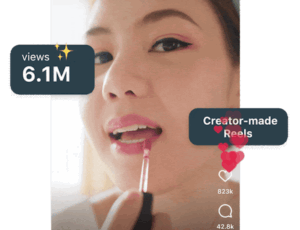 “Data-Driven Thinking” is written by members of the media community and contains fresh ideas on the digital revolution in media.
“Data-Driven Thinking” is written by members of the media community and contains fresh ideas on the digital revolution in media.
Today’s column is written by Ed Darmanin, chief revenue officer at 140 Proof.
Ever since Snapchat crashed the social networking scene, the app has made social heavyweights fidget anxiously and spawned a long line of imitators. It recently began the inevitable journey towards monetization, in the only way social platforms know: selling advertising. Its first ad officially ran over the weekend.
This is Snapchat’s shot at becoming the next big thing not just for millennials, but also for the advertisers that want their attention. Does it have to get it perfect right out of the gate? No, and so far it has not, but its experimentation is a good thing. As details emerge about its initial efforts, there are some useful observations we can make from the understandable flaws in the experiment.
Disappearing Eyeballs, Disappearing Advertisers?
Snapchat isn’t dissimilar from Facebook a few years back when it was first pivoting to incorporate advertising. You can expect the audience to be unwelcoming. And so Snapchat is bending over backward to ease its audience into this advertising transition.
The ads will start out nestled within Snapchat “stories,” the 24-hour status updates that users provide friends. While consumers might like the stories function, they’re less apt to actively check in for status updates on the app as stories don’t generate an alert like a regularly received “snap.” The average user checks their account about 14 times a day, but it’s unclear how much users interact with stories, and much less how they might interact with branded stories. All of this means fewer eyeballs for the ads.
Exacerbating that problem is the fact that Snapchat has made these initial ads ‘opt-in,’ meaning users must choose to view the ad or ignore it. The average consumer sees as many as 3,000 ad impressions a day. Who is asking for more? I think it’s safe to assume that Snapchat users function similarly to the rest of us when it comes to ads on YouTube – impatiently watching the seconds tick by before skipping the ad to view a video.
And while the app is certainly inching toward remedying these issues by sending occasional push notifications for story updates, Snapchat faces an implicit problem in that solution. The platform is built on a platform of private communication, so forcing consumers to pay attention to advertising feels a little like advertising on the placemats at an intimate dinner party.
You can make the argument that consumers would welcome better ads from companies they are actually interested in, but that’s a targeting issue, not an openness to even more ads. Yet targeting is missing entirely from these new ads. In an age when targeting is ever more precise, taking into account things like social activity, purchase history, travel patterns and other behavioral markers, Snapchat advertisers will not even have demographics.
Sure, Snapchat has a strong following with millennials and teens and that is attractive to advertisers. Are we not past the days when an advertiser jumped onto a new platform just to look hip? Real success in reaching a consumer with your brand requires a precisely targeted audience that’s interested in your message in the first place. Without the aid of that targeting, Snapchat ads risk becoming just another irrelevant marketing ploy in the barrage. If Snapchat wants its advertisements to have more staying power than users’ snaps, it must find good targeting raw material inside its platform and make that the hook for advertisers.
Why It Matters
With or without targeting, credit is due to Snapchat for getting off to a fair start. Brands have already started to play with the platform, and given that this will be the first time that anyone has monetized an app quite like this, it is experimenting in public.
Advertisers are also partaking in these test drives. Sometimes experiments backfire, so they have to be priced attractively and the advertiser has to go in knowing that they may be seen as an intruder. They have to be sensitive to the creative that honors the place they are in and the people they think they’re meeting. As an early advertiser in a social space, you can’t be OK with the idea of wasting some part of your reach, and neither can Snapchat. You want to add value as an advertiser, especially when you can expect a reflexive rejection of the idea that you have crashed this party. But you are also paving the way for future advertisers, setting up paradigms, best practices and (hopefully not) instructive failures.
Follow Ed Darmanin (@EddieDarms), 140 Proof (@140proof) and AdExchanger (@adexchanger) on Twitter.












